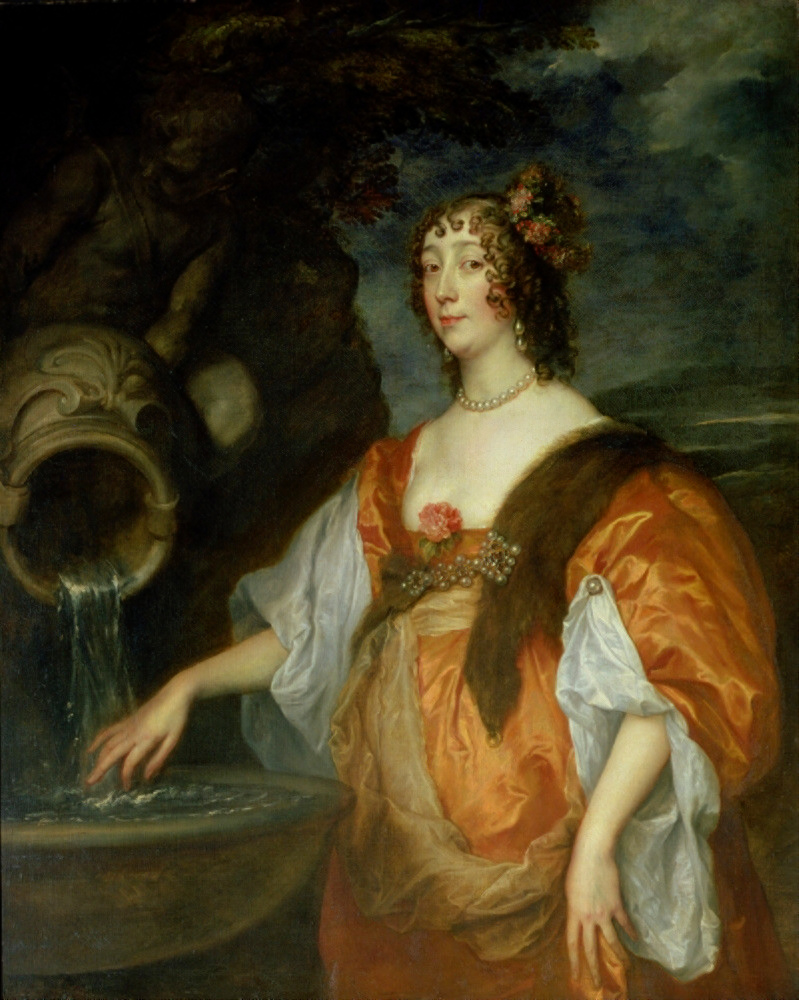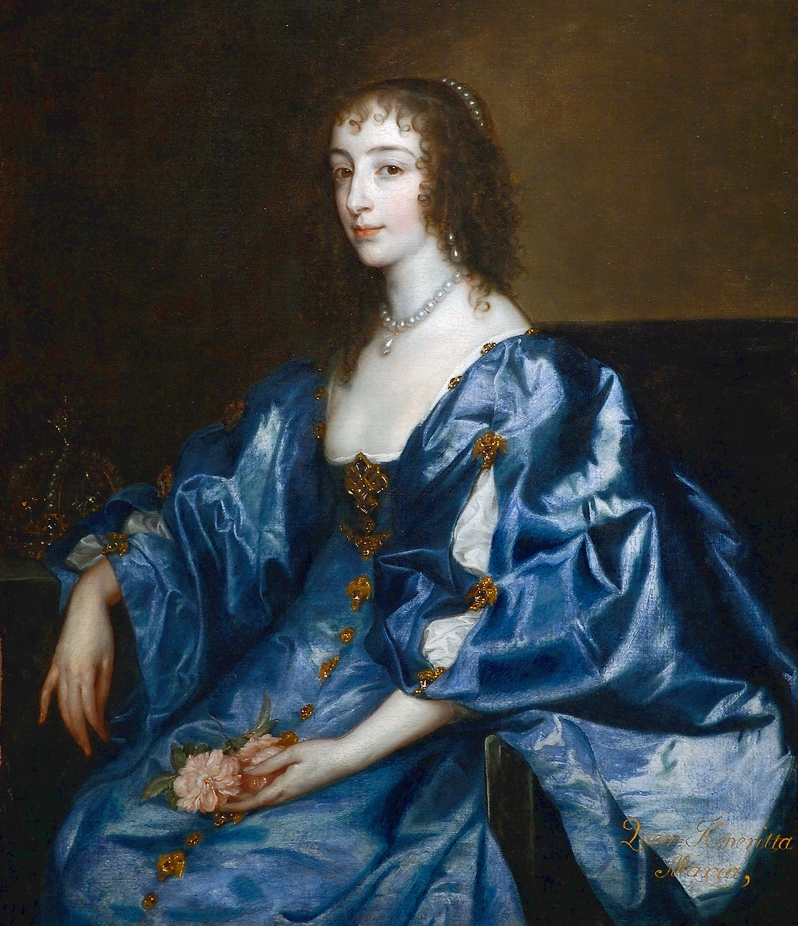by Susan Flantzer
© Unofficial Royalty 2021

Lucy Hay, Countess of Carlisle; Credit – Wikipedia
Favorite: a person treated with special or undue favor by a king, queen, or another royal person
Probably the inspiration for the character of Milady de Winter in The Three Musketeers by Alexandre Dumas, Lady Lucy Percy was born in 1599, the second of the four children and the younger of the two daughters of Henry Percy, 9th Earl of Northumberland and Lady Dorothy Devereux. Lucy’s mother was the sister of Robert Devereux, 2nd Earl of Essex, the favorite of Queen Elizabeth I of England who was executed for his part in an unsuccessful rebellion against Elizabeth. Lucy’s father spent sixteen years in the Tower of London, albeit in a comfortable situation due to his wealth, due to the suspicion that he was complicit in the failed Gunpowder Plot of 1605 to assassinate King James I.
Lucy had three siblings:
- Lady Dorothy Percy (circa 1598 – 1659); married Robert Sidney, 2nd Earl of Leicester, had twelve children
- Algernon Percy, 10th Earl of Northumberland (1602 – 1668), married (1) Lady Anne Cecil, had five daughters (2) Lady Elizabeth Howard, had one son
- Henry Percy, Baron Percy of Alnwick (1604 – 1659), unmarried

Lucy’s husband John Hay, 1st Earl of Carlisle; Credit – Wikipedia
In 1617, Lucy married James Hay (circa 1580 – 1636), who was created 1st Earl of Carlisle in 1622. James was a Scotsman who came to England with James VI, King of Scots when he succeeded Queen Elizabeth I of England as King James I of England in 1603. James Hay was an important courtier of King James I and King Charles I and represented the English Crown in many diplomatic missions abroad including the negotiations in 1624 for the wedding Charles, Prince of Wales, the future King Charles I, and Henrietta Maria of France. Lucy and James Hay had no children. Upon his death in 1636, he was succeeded by his son from his first marriage, James Hay, 2nd Earl of Carlisle.

Queen Henrietta Maria; Credit – Wikipedia
In 1626, Lucy was appointed Lady of the Bedchamber to Queen Henrietta Maria, wife of King Charles I, who had succeeded to the throne the previous year. Lucy soon became the queen’s favorite, was a popular figure at the court, and started to engage in court intrigues. She was the subject of Sir John Suckling‘s risqué poem Upon My Lady Carlisle’s Walking in Hampton Court Garden.

George Villiers, 1st Duke of Buckingham; Credit – Wikipedia
Lucy may have been the inspiration for the character of Milady de Winter in The Three Musketeers by Alexandre Dumas. She had an affair with George Villiers, 1st Duke of Buckingham, a favorite of both King James I and King Charles I. The 17th-century French diarist François de La Rochefoucauld mentioned in his memoirs that Lucy stole diamond studs that King Louis XIII of France (the brother of Queen Henrietta Maria of England) had given his wife Anne of Austria, Queen of France. Supposedly, Queen Anne had given the diamond studs to her admirer George Villiers, 1st Duke of Buckingham and Lucy stole them in a vengeful act because she was jealous of Buckingham’s love for Queen Anne. King Louis XIII wanted to see the studs and Queen Anne was able to recover them. Alexandre Dumas later used this entire story, and therefore he probably based Milady de Winter on Lucy Carlisle in The Three Musketeers.
Lucy was the mistress of political opponents Thomas Wentworth, 1st Earl of Strafford and then John Pym, serving them both as a secret informant. In 1642, Lucy informed her cousin Robert Devereux, 3rd Earl of Essex of King Charles I’s intention to arrest five members of the Long Parliament which enabled Essex and the others to escape. During the Second English Civil War between the Parliamentarians (Roundheads) and the Royalists (Cavaliers), Lucy sided with the Royalists. She helped fund the Royalist Army by selling her pearl necklace for £1500. Lucy maintained communication with Charles, Prince of Wales (the future King Charles II) during his blockade of the Thames, and served as an intermediary between the scattered bands of royalists and Queen Henrietta Maria. Less than two months after the beheading of King Charles I on January 30, 1649, Lucy was arrested due to her actions and imprisoned in the Tower of London. While in the Tower, she communicated in code with the new king in exile, Charles II, through her brother Algernon and was threatened with torture on the rack to gain information. Lucy was released on bail on September 25, 1650.
Lucy never regained her influence in royal circles. She died of a stroke at Little Salisbury House in London, England on November 5, 1660, at the age of 61, soon after the monarchy was restored. Lucy was buried in the Percy family vault at St. Mary the Virgin Churchyard in Petworth, Chichester District, West Sussex, England.

The statue above the Percy vault at St. Mary the Virgin Churchyard in Petworth; Credit – www.findagrave.com
This article is the intellectual property of Unofficial Royalty and is NOT TO BE COPIED, EDITED, OR POSTED IN ANY FORM ON ANOTHER WEBSITE under any circumstances. It is permissible to use a link that directs to Unofficial Royalty.
Works Cited
- En.wikipedia.org. 2020. Henry Percy, 9Th Earl Of Northumberland. [online] Available at: <https://en.wikipedia.org/wiki/Henry_Percy,_9th_Earl_of_Northumberland> [Accessed 25 December 2020].
- En.wikipedia.org. 2020. James Hay, 1St Earl Of Carlisle. [online] Available at: <https://en.wikipedia.org/wiki/James_Hay,_1st_Earl_of_Carlisle> [Accessed 25 December 2020].
- En.wikipedia.org. 2020. Lucy Hay, Countess Of Carlisle. [online] Available at: <https://en.wikipedia.org/wiki/Lucy_Hay,_Countess_of_Carlisle> [Accessed 25 December 2020].
- Englishhistoryauthors.blogspot.com. 2017. The Infamous Countess Of Carlisle. [online] Available at: <https://englishhistoryauthors.blogspot.com/2017/05/the-infamous-countess-of-carlisle.html> [Accessed 25 December 2020].
- Find a Grave. 2020. Lucy “Countess Of Carlisle” Percy Hay (1599-1660)…. [online] Findagrave.com. Available at: <https://www.findagrave.com/memorial/55392135/lucy-hay> [Accessed 25 December 2020].
